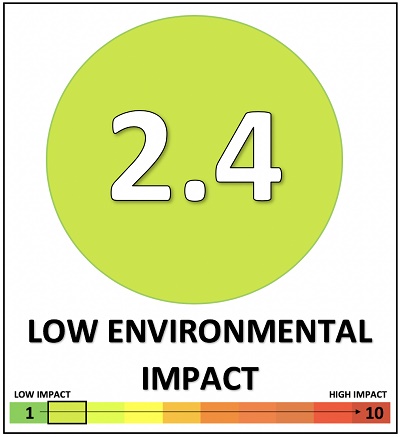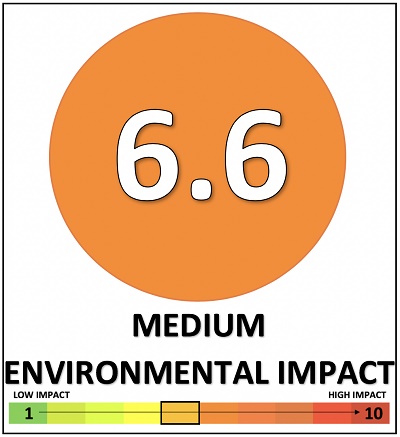Can you tell us a little bit about yourself?
 Hi, I'm Sophie! I'm in my final year studying Land Economy at Murray Edwards College and I'm currently writing my dissertation on the role of environmental food labels in influencing consumer choice. My particular interest lies in environmental sustainability (I was involved in introducing the Green Impact Scheme to College), and more specifically, how sustainability can be framed in an economic context.
Hi, I'm Sophie! I'm in my final year studying Land Economy at Murray Edwards College and I'm currently writing my dissertation on the role of environmental food labels in influencing consumer choice. My particular interest lies in environmental sustainability (I was involved in introducing the Green Impact Scheme to College), and more specifically, how sustainability can be framed in an economic context.
I took a paper in my second year, which really sparked my fascination with environmental economics as it helped me to understand how economics can be used to tackle the critical environmental problems confronting us today. By attempting to 'quantify' the environment, the challenges it poses appear more manageable and we can go about starting to resolve the problem.
I'm especially interested in looking at the bottom-up approaches to addressing environmental problems (although top-down strategies are similarly important), as individuals collectively hold a lot of power to motivate change. This relates to the behavioural strand of economics in which economics can be used to influence individual behaviour. 'Nudges' – like the environmental food labels in the Dome in College – are designed to help individuals make better choices by influencing certain behaviours.
Can you tell us more about the environmental food labels in the Dome?
The food labels have been designed to make the environmental impacts of food consumption salient at the point of purchase, attaching the indirect consequences of eating in the Dome to the diners. A lot of people just don't know how much impact their food choices have on the environment, and so it is the purpose of the labels to inform consumers of their environmental impact in the hope they will take this into account when deciding what to eat.
The idea to trial environmental food labels in the Dome came from a lecture I attended last year by Joseph Poore (a former Land Economy Masters student). After studying the severe impact of certain foods on the environment, he proposed the mandatory use of environmental labels in supermarkets, shops, restaurants etc. He argued that not only would this influence more sustainable behaviour among consumers, it would also put pressure on food producers to adopt more sustainable practices.
Poore was one of the first to introduce a multidimensional approach to labelling environmental impact. Where existing environmental labels exclusively considered a single indicator such as carbon emissions, Poore measures the impact of food production according to five key indicators: greenhouse gas (GHG) emissions, land use, eutrophication, biodiversity, and scarcity weighted water use. Greater land and water use, higher GHG emissions, increase eutrophication, and diminishing biodiversity resulting from food production all contribute to a higher environmental impact.
I wanted to develop this into one comprehensive and integrated measure of impact. Using Poore's data, I calculated the average impact of meals in the Dome according to the five indicators. The catering team very kindly allowed me to present these labels in the Dome, and they are being displayed intermittently throughout Lent Term.
The idea is to see whether the labels will have any influence on the food choices made in the Dome i.e. whether they can encourage people to move away from foods with a higher environmental impact (largely meat/fish dishes) and towards those with a lower environmental impact (largely vegan/vegetarian dishes).
Why do you think environmental food labels are important?
It's hard to assess the effectiveness of the environmental food labels in College so early on in the experiment. However, if they are successful in motivating sustainable behaviour change as their potential suggests, they could be really important in limiting the harmful impact of both food consumption and production.
Rather than implementing more stringent regulations, such as outright bans, the use of labels affords consumers the opportunity to voluntarily and consciously adjust their behaviour in order to limit their environmental impact. The beneficial effects are likely to be longer-lasting, spilling over into other activities, if there is an active choice by the individual to engage in more sustainable behaviour (e.g. by selecting the food option with a lower environmental impact) rather than being blindly forced into a certain behaviour.
As with any strategy, the environmental food labels are unlikely to be hugely effective in isolation. The labels must be complemented by greater provision of information for consumers, and strategies to tackle the environmental problems associated with food further down the chain of production. However, there is clearly a lot of scope for environmental food labels to induce subtle yet sustainable dietary changes, which in turn massively mitigate the environmental impact of food production.